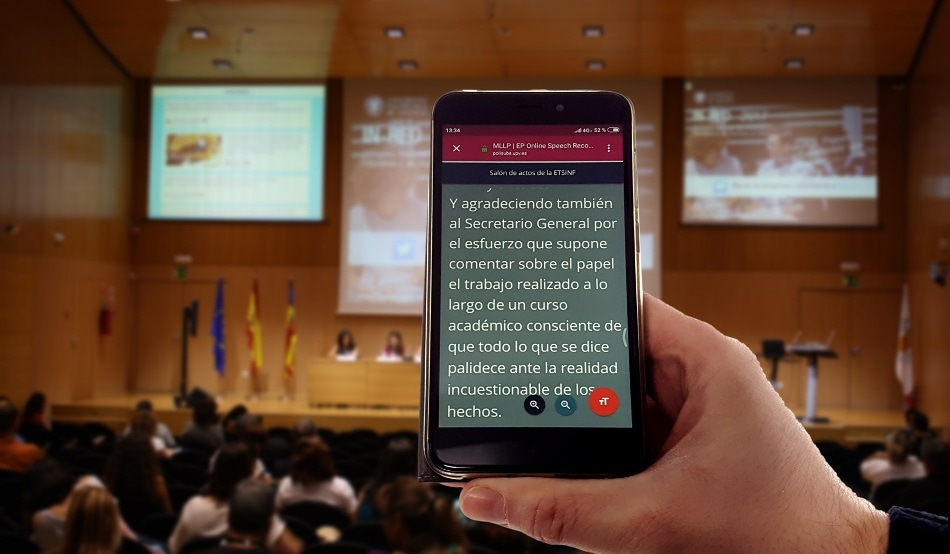Dec 31 2018
A unique system known as Polisubs has been developed by the Polytechnic University of Valencia (UPV). The system automatically generates subtitles in real time during conferences.
 Image credit: The Polytechnic University of Valencia
Image credit: The Polytechnic University of Valencia
According to the National Confederation of Deaf People (CNSE) study, in Spain, more than a million people aged above six have different degrees and types of hearing disabilities; these people account for 8% of the population. Among these, more than 97% communicate through oral language, revealed the National Statistics Institute (INE) data. For all these people, it is difficult to understand the didactic activities and events that happen at the university.
This is the reason why the UPV and its Machine Learning and Language Processing (MLLP) research team have created a real-time, automated subtitle system known as Polisubs, which enhances disability attention services and thus makes the UPV conferences and events more accessible.
With the help of this system, users can follow the event by simply reading the subtitles via an app meant for mobile devices (Android and IOS), or alternatively, they can do so on a website on their mobile phones. In addition, if the event is recorded, the subtitles will be automatically added to the video.
Polisubs gets the ambient sound through a microphone system and transmits it to the UPV’s central servers, where it is processed using an artificial intelligence system and a flow of text subtitles is eventually generated. It has 97% quality when compared to a human transcriber, albeit some individuals can still have comprehension problems. The system works concurrently in English, Spanish, and Valenciano, and is currently being developed in other languages as well.
Last November, the Polisubs system was presented at the IV International Congress on the University and Disability, which was organized by the ONCE Foundation for the Inclusion and Social Cooperation of People with Disabilities.
All through 2018, the UPV has performed implementation tests of Polisubs in the main conference halls of the university, with the goal to continue the deployment in 2019 and with an aim to have this technology available in all classrooms and halls.